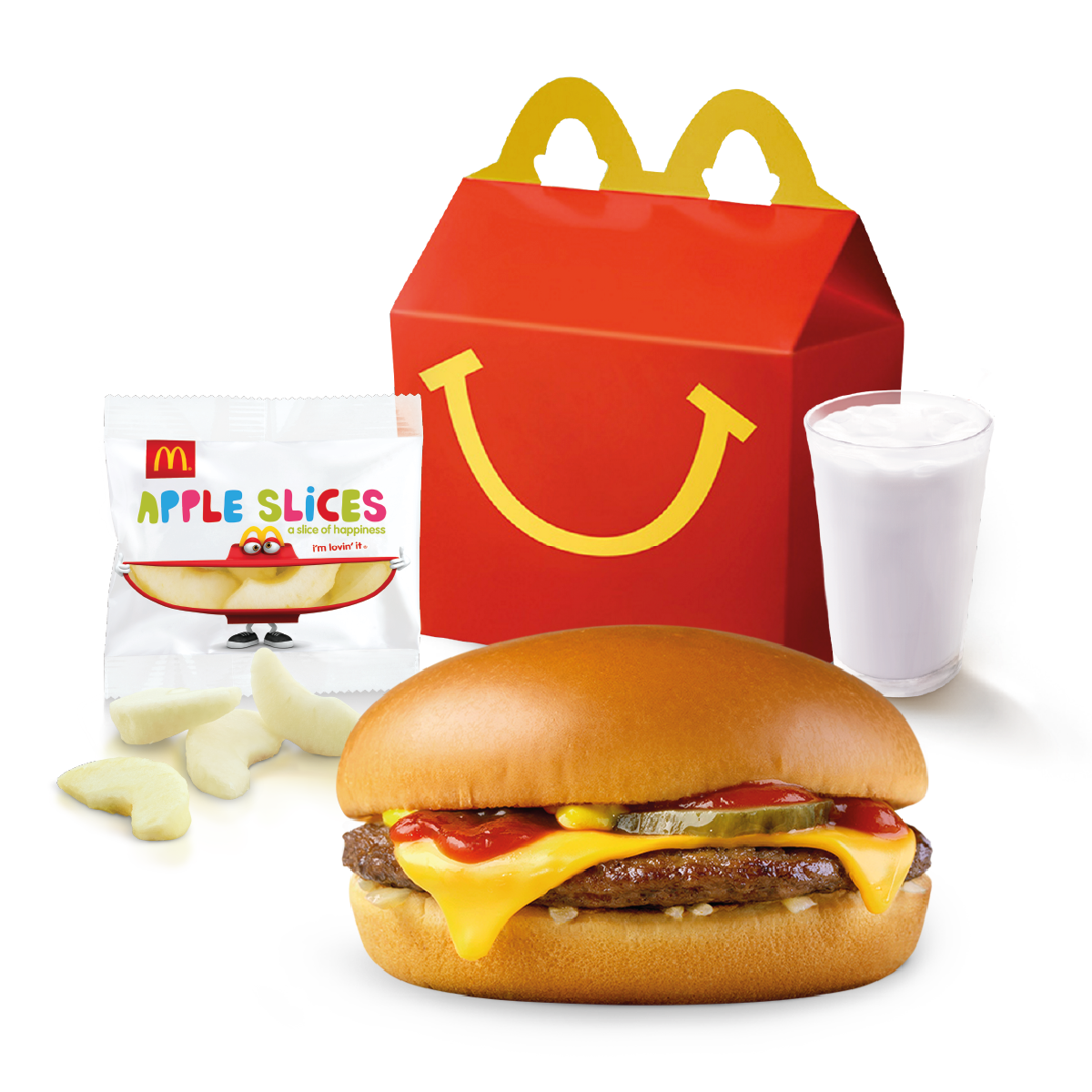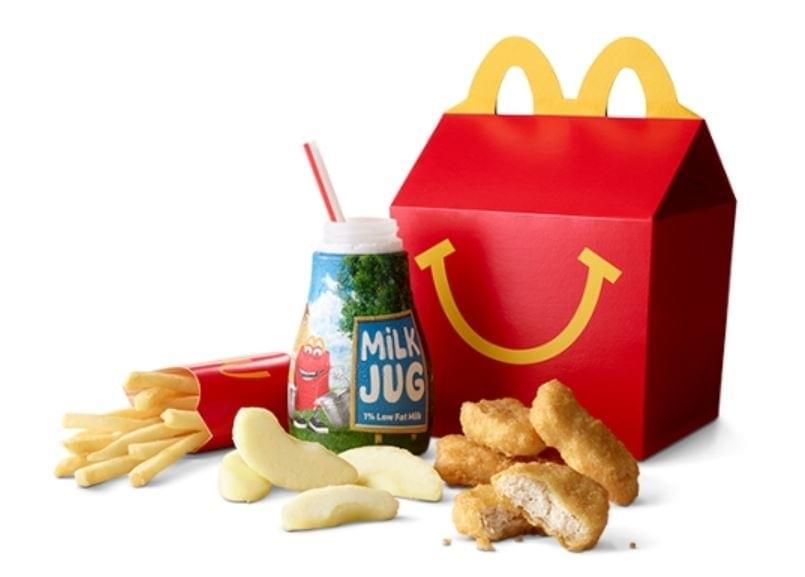McDonald's Happy Meal: Fun, Nutrition & More [Complete Guide]
Is the McDonald's Happy Meal truly a source of joy and balanced nutrition for children, or does it mask potential health concerns behind a veil of playful marketing? The McDonald's Happy Meal, a ubiquitous symbol of childhood, warrants a closer look to unravel its composition, nutritional profile, and overall impact on the health and well-being of our youngest consumers.
A deep dive into the world of Happy Meals reveals a complex interplay of factors, including meal composition, toy options, nutritional value (calories, fat, sodium, etc.), potential health implications, marketing strategies targeted toward children, and the historical evolution of the meal and its promotional tie-ins. Understanding these facets is crucial for parents, educators, and healthcare professionals to make informed decisions about the place of Happy Meals in a child's diet.
| Aspect | Details |
|---|---|
| Name | McDonald's Happy Meal |
| Origin | United States |
| Launch Date | 1979 |
| Target Audience | Children |
| Core Components | Main entree (hamburger, cheeseburger, or Chicken McNuggets), side (fries, apple slices, or carrot sticks), drink (milk, juice, or soda), and a toy. |
| Typical Calorie Range | 475 calories (Hamburger Happy Meal) |
| Fat Content (Hamburger Happy Meal) | 16 grams |
| Carbohydrate Content (Hamburger Happy Meal) | 62 grams |
| Average Price Range | $6 to $6.50 (varies by location) |
| Evolution | Introduction of healthier options like apple dippers (2004) and automatic inclusion of apple slices (2012). Ongoing efforts to balance fun and nutrition. |
| Marketing Strategy | Focus on fun, playfulness, and association with popular children's characters through toys and promotions. |
| Nutritional Concerns | Potential for high levels of sodium, fat, and sugar, depending on choices. Emphasis on balanced choices is important. |
| Website | McDonald's Family Page |
McDonald's itself acknowledges the importance of offering wholesome options within the Happy Meal framework. The evolution of the Happy Meal in the U.S. began in 2004 with the introduction of choices like apple dippers, milk, and apple juice in select markets. This marked a significant step towards providing healthier alternatives to traditional sugary drinks and fried sides. Further progress was made in 2012 when apple slices were automatically included in every Happy Meal, ensuring that children had at least one fruit serving with their meal.
- Viralkand News Traffic Whats Trending Now Update
- The Life Of Pablo Escobars Son From Juan Pablo To Sebastin Marroqun
Since its launch in 1979, the McDonald's Happy Meal has become a global phenomenon, deeply ingrained in popular culture. Today, McDonald's aims to strike a balance between fun and nutrition by offering updated meal options, including apple slices, healthier beverage choices, and reformulated menu items with reduced sodium and sugar content. The inclusion of a toy remains a key element of the Happy Meal experience, adding to the appeal for children. However, the nutritional content of the meal choices warrants careful consideration.
A typical Hamburger Happy Meal, consisting of a hamburger, kids fries, 1% low fat milk jug, and apple slices, contains approximately 475 calories. While this may seem like a moderate calorie count for a child's meal, it's crucial to examine the macronutrient breakdown. The same meal contains 16 grams of fat and 62 grams of carbohydrates. Parents need to be aware of these figures and consider them in the context of their child's overall dietary needs and activity level. A balanced approach involves making informed choices about the Happy Meal components to minimize unhealthy fats, added sugars, and excessive sodium.
Ordering a Hamburger Happy Meal through the McDonald's app offers the convenience of mobile order and pay with curbside pickup. This digital accessibility makes it easier for parents to incorporate Happy Meals into their busy schedules. However, it's essential to remember that convenience should not overshadow nutritional considerations. The McDonald's Happy Meal has indeed been a long-time favorite of children, but its nutritional profile requires careful evaluation.
- Hyungry Temporary Replacement Behind The Scenes Whats Next
- Why Everyones Obsessed With Temporary Replacement Ep 3 Hungry
A standard McDonald's hamburger Happy Meal includes a hamburger topped with pickles, onions, ketchup, and mustard, along with french fries, milk, apple slices, and the ever-popular toy. While the apple slices and milk contribute to the meal's nutritional value, the hamburger and fries can be sources of unhealthy fats and sodium. A McDonald's hamburger Happy Meal contains 475 calories, 16 grams of fat, and 62 grams of carbohydrates. The price for a Happy Meal varies by location but typically ranges from $6 to $6.50.
Examining the nutritional facts of a Hamburger Happy Meal reveals that it contains 475 calories, making it a moderate option for a child's meal in terms of energy content. However, the source of those calories is just as important as the total number. It is crucial to consider that some choices within the Happy Meal, such as opting for a cheeseburger instead of a hamburger or choosing sugary beverages over milk or juice, can significantly increase the calorie count and negatively impact the meal's overall nutritional value.
A comprehensive resource offering information about the Happy Meal would need to delve into various aspects. These include a detailed breakdown of the meal's composition, encompassing all available entree, side, and drink options. The toy selection process, licensing agreements with entertainment companies, and the potential impact of these toys on children's preferences would also warrant investigation. Furthermore, a thorough analysis of the nutritional value, including precise calorie counts, macronutrient ratios, and micronutrient content, is essential for providing parents with the information they need to make responsible choices.
The potential health implications of regularly consuming Happy Meals, particularly in the context of childhood obesity and related health issues, must be addressed. Marketing strategies targeted towards children, including the use of cartoon characters, celebrity endorsements, and promotional tie-ins, should be critically examined for their influence on children's food preferences and eating habits. The historical evolution of the Happy Meal, from its inception to its current form, provides valuable insights into how it has adapted to changing consumer demands and evolving nutritional guidelines.
To truly understand the Happy Meal's place in a child's diet, it's essential to consider not just the nutritional facts but also the broader social, cultural, and economic factors that contribute to its appeal. The Happy Meal represents more than just a meal; it's an experience, a treat, and a symbol of childhood. However, responsible consumption requires informed decision-making and a balanced approach to nutrition.
Our nutrition calculator provides calorie counts, macros, carbs, and nutrition facts for all McDonald's menu items, empowering consumers to make informed choices. It's important to note that McDonald's terms and conditions have changed, and users are encouraged to review the updated terms. McDonald's strives to make the Happy Meal a fun experience while also offering wholesome options for young guests.
The evolution of the Happy Meal demonstrates McDonald's ongoing efforts to address nutritional concerns. The introduction of apple dippers, milk, and apple juice in 2004 was a significant step towards providing healthier choices. The automatic inclusion of apple slices in every Happy Meal in 2012 further reinforced this commitment. These changes reflect a growing awareness of the importance of providing balanced meal options for children.
The Happy Meal's enduring popularity can be attributed to its combination of food, fun, and affordability. The inclusion of a toy remains a major draw for children, creating a sense of excitement and anticipation. The price point of the Happy Meal makes it accessible to a wide range of families. However, it's essential to remember that the Happy Meal should be viewed as an occasional treat rather than a dietary staple.
A Hamburger Happy Meal with hamburger, kids fries, 1% low fat milk jug, and apple slices is one possible combination, providing 475 calories. Parents should be aware of these nutritional facts to determine if the meal aligns with their childs daily dietary needs. Mobile ordering through the McDonald's app offers convenience, but thoughtful consideration of nutritional options should always be the priority.
The Happy Meal has been a long-time favorite, and contains a hamburger topped with pickles, onions, ketchup and mustard, french fries, milk, apple slices, and a toy. While the apple slices and milk are nutritious elements, other components like the hamburger and fries should be consumed in moderation. A McDonald's hamburger Happy Meal, as noted earlier, contains 475 calories, 16 grams of fat and 62 grams of carbohydrates. The price typically ranges from $6 to $6.50.
The Hamburger Happy Meal provides 475 calories, so parents need to know that calorie intake is moderate and that it also provides all the food groups such as: carbohydrates, Protein, Vitamins, and Minerals. Choosing healthier options like apple slices, milk, and grilled chicken can reduce the overall calorie and fat content. Ultimately, the Happy Meal can be part of a balanced diet if parents make informed choices.
When considering the Happy Meal, pay attention to meal composition, toy options, and nutritional value, including calories, fat, and sodium. Be mindful of potential health implications and evaluate marketing strategies targeting children. A Hamburger Happy Meal is just one option; exploring available modifications can enhance nutritional benefits.
The Happy Meal has become a staple for kids worldwide, with McDonald's balancing fun and nutrition with updated meal options, including apple slices. A fun happy meal toy completes the experience, but it's important to remember that the primary goal is to nourish children. Be aware of possible allergens by checking the ingredients, and take note of the nutritional breakdown including calories, fat, carbs, and protein.
The inclusion of milk and apple slices with the hamburger provides a bit of balance. As the Happy Meal is a balanced meal that kids love, and parents can feel good about. Opting for apple slices over fries, for example, substantially reduces the fat content. By providing detailed nutritional information, McDonald's empowers parents to make the best choices for their children.
The Happy Meal is a long time favorite of kids everywhere, featuring a hamburger, french fries, milk, apple slices, and a toy. When assessing the nutritional impact of a Happy Meal, it's important to look at the total amount of calories. Making informed choices is key to ensuring the Happy Meal fits into a child's balanced dietary plan. Parents have the power to promote healthy habits and minimize the negative impacts.
The McDonald's app allows users to order their hamburger Happy Meal, but responsible choices about components must be a priority. The Happy Meal is a well-known children's staple, blending toy excitement and eating. When planning a childs nutrition, it is important to weigh the facts to evaluate the balance. These factors need to be looked into when planning and creating a healthy lifestyle.
A closer look at nutrition is essential when considering this meal option. The Happy Meal presents both enjoyment and nutritional factors; evaluating nutritional facts is key. Parents are urged to be mindful when offering this meal. It delivers moderate calories and can be a fit, especially when parents weigh components.
- Freezenova Unblocked Games Your Gateway To Fun Play Now
- Kirby Yates Stats Career Highlights Dodgers Future

"The Ultimate Guide to McDonald's Happy Meal Grilled Chicken Snack Wra

Mcdonald'S Happy Meal November 2024 Uk Hali Tomasina

McDonald's Chicken McNuggets Happy Meal Nutrition Facts